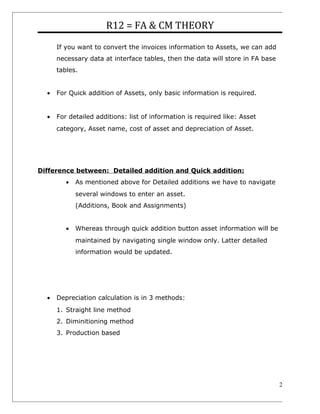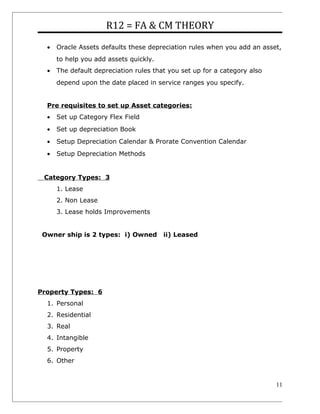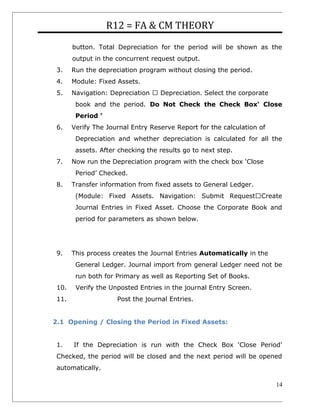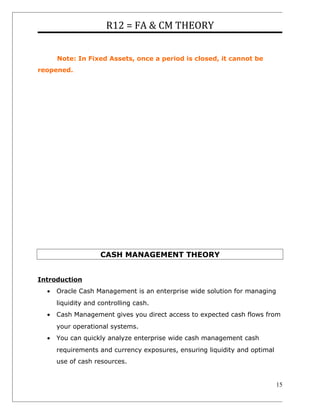Fixed assets is a standalone application that manages asset information at the SOB/PL level. Key elements include asset categories, books, and calendars. Mass additions transfer asset data from accounts payable to fixed assets interface tables. Depreciation is calculated using straight line, diminishing value, or production-based methods. Asset information can be transferred between books, locations, and accounts. Physical inventories verify fixed asset information against physical assets.


















